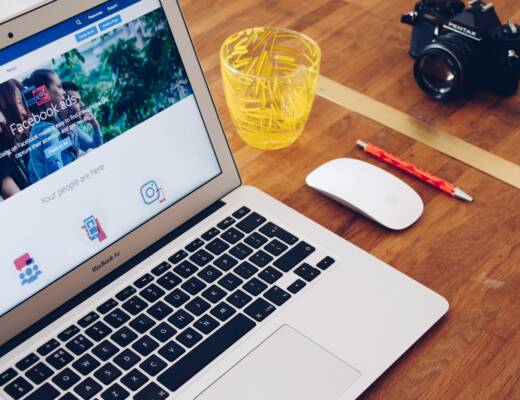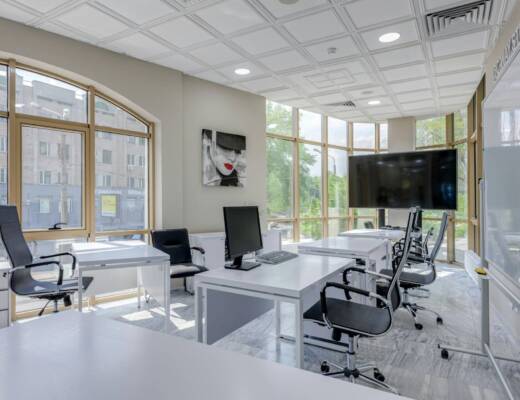Leasing equipment can be a smart choice for businesses looking to access the tools they need without the hefty price tag of purchasing. This guide breaks down the essentials of equipment leasing, highlighting its advantages and important factors to consider before making a decision. Whether you’re a small business owner or part of a larger company, understanding equipment leasing can help you make informed choices that benefit your operations.
Key Takeaways
- Leasing allows businesses to use equipment without large upfront costs.
- Monthly payments for leases can help manage cash flow better.
- Leasing can provide tax benefits, making it financially smart.
- At the end of a lease, businesses can choose to buy, renew, or return the equipment.
- Researching leasing companies is crucial for finding the best deal.
Understanding Equipment Leasing

Definition and Key Concepts
Equipment leasing is a way for businesses to use equipment without buying it outright. Instead of spending a lot of money upfront, I can rent the equipment for a set time. This is similar to renting a car; I get to use it without owning it. Leasing helps me manage my budget better and allows me to access high-cost machinery or technology without the big price tag.
Types of Equipment Leases
There are a few main types of equipment leases I should know about:
- Operating Leases: These are like long-term rentals. I pay monthly, but the leasing company still owns the equipment.
- Finance Leases: This is more like a loan. I can buy the equipment at a lower price at the end of the lease.
- Sale/Leaseback: I sell my equipment to a leasing company and then lease it back. This gives me cash while still using the equipment.
Common Terms and Conditions
When I lease equipment, there are some important terms to understand:
- Lease Agreement: This is the contract that outlines my rights and responsibilities.
- Lease Term: This is how long I can use the equipment.
- End-of-Lease Options: At the end of the lease, I can return the equipment, renew the lease, or buy it.
Understanding these basics of equipment leasing can help me make better decisions for my business. It’s all about finding the right balance between cost and access to the tools I need to succeed.
Leasing equipment can be a smart choice, especially when I want to keep my cash flow healthy and stay updated with the latest technology. It’s a flexible option that can help my business grow without the heavy financial burden of buying equipment outright.
Leasing equipment instead of buying can be a great way to save money and keep my business running smoothly.
Benefits of Equipment Leasing for Businesses
Leasing equipment can be a smart choice for many businesses. Here are some key benefits I’ve found:
Financial Flexibility and Cash Flow Management
Leasing helps me manage my cash flow better. Instead of spending a lot of money upfront, I can spread the payments over time. This means I can use my cash for other important things, like paying bills or investing in growth.
- Lower Monthly Payments: Lease payments are often less than loan payments.
- No Down Payment: Many leases don’t require a big upfront cost.
- Predictable Expenses: I know exactly what I’ll pay each month, making budgeting easier.
Access to Latest Technology
Leasing allows me to stay current with technology. I can easily upgrade to the latest equipment without worrying about it becoming outdated. This is especially important in fast-moving industries.
- Avoid Obsolescence: I don’t have to worry about my equipment becoming old and useless.
- Quick Upgrades: When my lease ends, I can simply sign a new lease for the latest model.
- Competitive Edge: Having the newest tools helps me stay ahead of my competitors.
Tax Advantages
Leasing can also provide some tax benefits. I can often deduct my lease payments as a business expense, which can save me money come tax time.
- Tax Deductions: Lease payments are usually fully deductible.
- Off-Balance Sheet Financing: This means my lease doesn’t show up as debt on my balance sheet, which can make my business look better to investors.
- Capital Conservation: I can use my capital for other investments instead of tying it up in equipment.
In my experience, equipment leasing not only helps with cash flow but also keeps my business agile and competitive. It’s a win-win situation!
Key Considerations Before Leasing Equipment

When I think about leasing equipment, there are a few important things I always consider. Leasing can be a great option, but it’s not always the best choice for every business. Here are some key points to keep in mind:
Cost Analysis: Leasing vs. Buying
- Monthly Payments: Leasing usually means lower monthly payments compared to buying. This can help with cash flow.
- Long-Term Costs: Over time, leasing might end up being more expensive. I always calculate the total cost of leasing versus buying.
- Ownership: At the end of a lease, I don’t own the equipment. If I buy, I can keep it and use it as long as I want.
Impact on Business Operations
- Flexibility: Leasing allows me to upgrade to newer equipment more easily. This is important in fast-changing industries.
- Maintenance: Sometimes, the leasing company handles maintenance, which can save me time and hassle.
- Usage Needs: I consider how often I’ll use the equipment. If it’s just for a short time, leasing might be the way to go.
Legal and Contractual Obligations
- Read the Fine Print: I always read the lease agreement carefully. There can be hidden fees or strict terms that I need to understand.
- Termination Clauses: I check what happens if I need to end the lease early. Are there penalties?
- Renewal Options: I look for options to renew or extend the lease if I need the equipment longer.
Before I decide to lease, I make sure to weigh all these factors carefully. It’s important to choose what’s best for my business in the long run.
In summary, leasing equipment can offer benefits, but I need to consider costs, how it affects my operations, and the legal aspects before making a decision. Understanding these points helps me make a more informed choice about whether leasing is the right path for my business.
Steps to Secure an Equipment Lease

Identifying Your Equipment Needs
First, I need to figure out exactly what equipment my business requires. This means thinking about the type, model, and how many pieces I need. Knowing my needs helps me decide if leasing is the right choice.
Researching and Selecting Leasing Companies
Next, I’ll look into different leasing companies. I want to compare their offers based on:
- Lease terms
- Interest rates
- Reputation
- Customer reviews
This research helps me find a reliable lessor with good terms.
Negotiating Lease Terms
Once I find a suitable lessor, I’ll review the lease agreement they provide. I should not hesitate to negotiate terms like:
- Payment schedules
- Interest rates
- End-of-lease options
This step is crucial to ensure I get the best deal possible.
Remember, understanding the lease terms is key to avoiding surprises later on.
Submitting a Lease Application
After agreeing on the terms, I’ll fill out the lease application. This includes details about my business and the equipment I want to lease. This step kicks off the lessor’s review process.
Undergoing Credit Evaluation
Once I submit my application, the lessor will check my credit. They’ll look at my credit score and financial history to see if I can handle the lease payments.
Signing the Lease Agreement
If everything looks good, I’ll sign the lease agreement. This document outlines my responsibilities, including payment amounts and schedules.
Arranging for Equipment Delivery
Finally, I’ll coordinate with the lessor to get the equipment delivered. I need to make sure it meets my specifications and is in good working condition before I start using it.
By following these steps, I can secure an equipment lease that fits my business needs and helps me grow.
Managing Your Equipment Lease

When it comes to managing your equipment lease, there are several important aspects to consider. Staying organized and informed can make a big difference. Here’s what I focus on:
Maintenance and Upkeep Responsibilities
- Know Your Responsibilities: Understand what maintenance tasks you are responsible for. Some leases include maintenance, while others require you to handle it.
- Schedule Regular Checks: Keep a calendar for maintenance checks to ensure everything runs smoothly.
- Document Everything: Keep records of maintenance and repairs. This can help if there are disputes later.
End-of-Lease Options
At the end of your lease, you usually have three choices:
- Return the Equipment: Hand it back to the leasing company.
- Renew the Lease: Extend your lease for more time.
- Purchase the Equipment: Buy it at a set price if you want to keep it.
Handling Lease Renewals and Upgrades
- Start Early: Begin discussing renewals or upgrades a few months before the lease ends.
- Evaluate Your Needs: Think about whether you still need the equipment or if you want something newer.
- Negotiate Terms: Don’t hesitate to negotiate better terms for your renewal or upgrade.
Managing your lease effectively can save you money and ensure you have the right tools for your business.
By keeping these points in mind, I can navigate my equipment lease more effectively and avoid common pitfalls. Remember, being proactive is key!
Tax and Accounting Implications of Equipment Leasing
Tax Deductions and Benefits
Leasing equipment can be a smart move for my business, especially when it comes to taxes. I can often deduct the full amount of my lease payments from my taxable income. This means that leasing can help lower my overall tax bill. Here’s a quick list of potential tax benefits:
- Lease payments may be deductible as business expenses.
- I might be able to claim depreciation over several years.
- Certain leased items, like vehicles or equipment, can be written off.
Accounting Treatment of Leases
When I lease equipment, it’s important to know how it affects my financial statements. Unlike buying equipment, leasing doesn’t show up as an asset on my balance sheet. Instead, it’s treated as a rental expense. This can be beneficial because:
- It keeps my balance sheet cleaner.
- I can still qualify for tax incentives.
- It doesn’t impact my borrowing capacity.
Consulting with Financial Advisors
Before making any decisions, I always recommend talking to a financial advisor. They can help me understand the specific tax benefits and accounting treatments that apply to my situation. This way, I can make the best choice for my business.
Understanding the tax and accounting implications of leasing can save me money and help my business grow.
In summary, leasing equipment can offer significant tax advantages and a favorable accounting treatment. By being informed and seeking expert advice, I can make the most of these benefits.
Common Pitfalls and How to Avoid Them
When it comes to equipment leasing, there are a few common pitfalls that I’ve seen businesses fall into. Being aware of these can save you time and money.
Hidden Costs and Fees
Leasing equipment might seem straightforward, but there can be hidden costs. Here are some to watch out for:
- Maintenance Fees: Some leases require you to pay for maintenance, which can add up.
- Insurance Costs: You might need to insure the equipment, which is an extra expense.
- Early Termination Fees: If you need to end the lease early, you could face hefty penalties.
Understanding Lease Terms
It’s crucial to read the lease agreement carefully. Here are some key points to consider:
- Duration of the Lease: Know how long you’re committing to the lease.
- Usage Restrictions: Some leases limit how you can use the equipment.
- Alteration Rules: Check if you can modify the equipment to fit your needs.
Planning for End-of-Lease Scenarios
At the end of the lease, you have options, but they can be tricky. Here’s what to think about:
- Return Condition: Make sure you understand what condition the equipment needs to be in when you return it.
- Purchase Options: Some leases allow you to buy the equipment at the end. Know the price!
- Renewal Terms: If you want to keep the equipment, check how the renewal process works.
Being informed about these pitfalls can help you make better decisions and avoid costly mistakes.
By keeping these points in mind, you can navigate the leasing process more effectively and ensure that you’re making the best choice for your business.
Conclusion
In summary, equipment leasing can be a smart choice for many businesses. It allows you to access the latest tools without the high costs of buying them outright. Leasing helps manage cash flow and can offer tax benefits, making it easier to invest in other areas of your business. However, it’s important to weigh the pros and cons carefully. While leasing can save money in the short term, it might end up costing more over time. Always consider your business needs and financial situation before making a decision. By understanding the ins and outs of equipment leasing, you can make a choice that supports your business goals.
Frequently Asked Questions
What is equipment leasing?
Equipment leasing means renting equipment instead of buying it. You pay a monthly fee to use the equipment for a set time.
What are the benefits of leasing equipment?
Leasing equipment can save you money in the short term, let you use the latest technology, and may offer tax benefits.
Are there different types of equipment leases?
Yes, there are different types of leases, like operating leases and capital leases, each with its own rules and benefits.
What should I consider before leasing equipment?
You should think about the total costs, how it will affect your business, and any legal agreements involved.
How do I choose a leasing company?
Look for companies that specialize in your type of equipment, check reviews, and compare their rates and terms.
What happens at the end of the lease?
At the end of the lease, you can usually return the equipment, renew the lease, or buy it.







